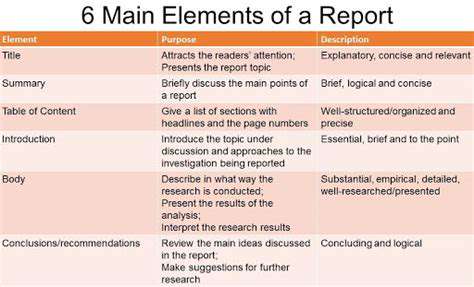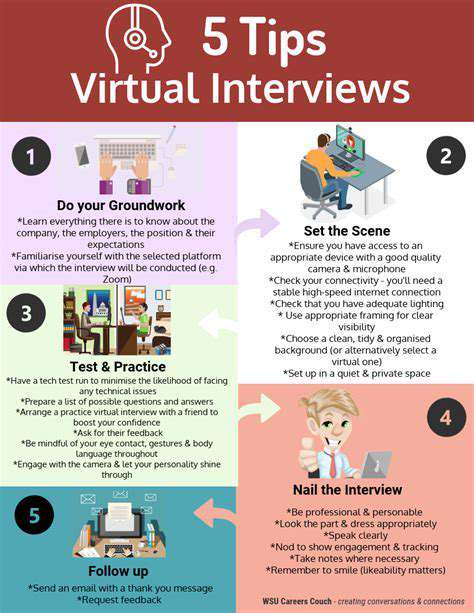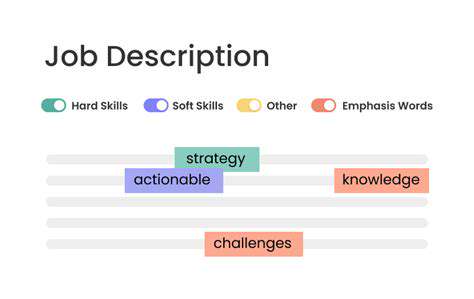Best Practices for Workplace Etiquette (Modern)
Understanding the Importance of Rapport
Building rapport is crucial in modern interactions, whether professional or personal. It's the foundation upon which trust and respect are built. A strong rapport fosters open communication, making it easier to understand different perspectives and resolve conflicts constructively. Without rapport, interactions can feel strained and unproductive, hindering progress and creating unnecessary tension. Establishing rapport involves active listening, empathy, and demonstrating genuine interest in the other person's thoughts and feelings. This active engagement creates a sense of connection and understanding, essential for positive relationships.
In today's fast-paced world, where efficiency is often valued above all else, taking the time to build rapport can seem like a luxury. However, the long-term benefits of strong relationships, built on mutual respect and understanding, far outweigh any perceived loss of time. A solid foundation of rapport allows for smoother collaborations, more effective problem-solving, and ultimately, more fulfilling interactions in all aspects of life.
Respectful Communication: Active Listening and Empathy
Respectful communication is more than just avoiding insults or rude remarks. It's an active process of listening attentively, understanding the other person's viewpoint, and responding thoughtfully. This involves truly hearing what the other person is saying, both verbally and nonverbally, and considering their perspective, even if you don't agree with it. Demonstrating empathy—putting yourself in the other person's shoes—is a key element of respectful communication. It allows you to connect with them on a deeper level and respond in a way that acknowledges and values their feelings.
Active listening techniques, such as summarizing what you've heard and asking clarifying questions, are vital to ensure mutual understanding. This proactive approach ensures that you're not only hearing the words, but also grasping the underlying meaning and intent behind them. Respectful communication fosters a safe and supportive environment where everyone feels valued and heard.
Nonverbal Communication and Body Language
Nonverbal communication plays a significant role in building rapport and showing respect. Your body language, including posture, eye contact, and facial expressions, can convey more than words. Maintaining open posture, making appropriate eye contact, and using positive facial expressions can project confidence and approachability. Conversely, crossed arms, avoiding eye contact, or a dismissive expression can signal a lack of interest or respect.
Being mindful of your nonverbal cues is essential in today's increasingly digital world. Even in virtual interactions, body language cues can be interpreted, even if they are subtle, and can significantly impact how you are perceived. Understanding and using nonverbal communication effectively can enhance your interactions and create a more positive and respectful atmosphere.
The Role of Adaptability in Building Rapport
Building rapport and demonstrating respect requires adaptability. Different individuals communicate and interact in various ways. Understanding and adapting to these differences is vital. What works with one person might not work with another. A flexible approach allows you to tailor your communication style to the specific individual and the context of the interaction.
Being aware of cultural nuances and individual preferences is essential. By demonstrating a willingness to adapt, you show respect for the other person's unique qualities and experiences. This adaptability creates a more inclusive and understanding environment, where everyone feels valued and respected.
Maintaining Professional Boundaries and Etiquette
Maintaining professional boundaries is crucial to demonstrating respect and maintaining a healthy working environment. This includes respecting others' time, opinions, and personal space. Avoiding gossip, inappropriate jokes, and personal attacks is essential for maintaining a positive atmosphere. Professionalism extends to adhering to established workplace etiquette, such as punctuality, proper attire, and appropriate communication channels. Setting and respecting boundaries ensures that interactions remain focused on professional goals and avoids any personal conflict.
Ethical conduct, including honesty, integrity, and confidentiality, are also fundamental aspects of maintaining professional boundaries. By upholding these principles, you build trust and credibility, further strengthening rapport and respect.
Effective Communication: Beyond the Basics
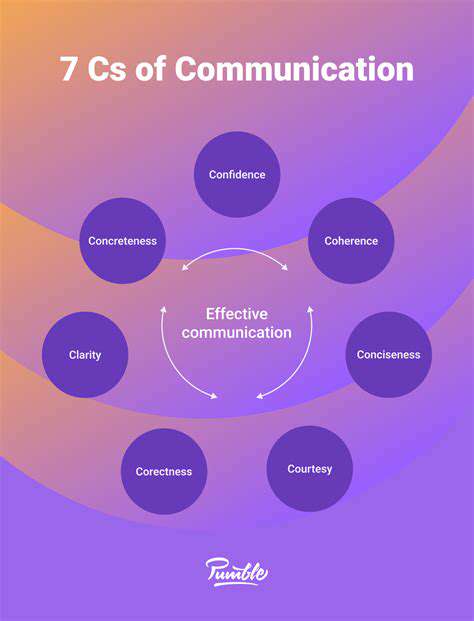
Understanding Your Audience
Effective communication hinges on a deep understanding of your audience. Knowing their background, perspectives, and communication preferences is paramount. This involves more than just knowing their demographics; it's about truly grasping their needs and motivations. By tailoring your message to resonate with their specific concerns, you significantly increase the likelihood of your message being received and understood. This understanding allows you to craft a message that is not only informative but also engaging and impactful.
Consider their level of expertise on the topic. Someone with extensive knowledge will appreciate a more nuanced approach, while a newcomer might benefit from a more basic explanation. Taking the time to adapt your style and language ensures that your message is accessible and valuable to everyone involved.
Choosing the Right Medium
The method of communication you select plays a crucial role in its effectiveness. A formal email might be appropriate for conveying important updates, whereas a casual chat might be better for brainstorming or casual discussions. Selecting the right medium is essential for ensuring your message reaches the intended audience in the most effective way. In today's digital age, there are numerous options, each with its own advantages and disadvantages. Careful consideration of the context and your audience is essential.
Crafting a Clear and Concise Message
Ambiguity is the enemy of effective communication. Ensure your message is clear, concise, and easily understood. Avoid jargon or overly technical language unless your audience is specifically familiar with it. A well-structured message, free of unnecessary details, will be more impactful than a rambling one. Clarity is key to avoiding misinterpretations and ensuring your message resonates with the recipient.
Active Listening and Feedback
Communication is a two-way street. Active listening is critical to understanding the other person's perspective and responding appropriately. Pay close attention not only to the words being spoken but also to the nonverbal cues and body language. This allows you to gain a deeper understanding of the message and respond thoughtfully. Seeking feedback is equally important, as it allows you to refine your communication style and improve future interactions.
Nonverbal Communication
Nonverbal cues, such as body language, facial expressions, and tone of voice, significantly impact how a message is perceived. A confident posture and engaging eye contact can project confidence and credibility. Conversely, fidgeting or avoiding eye contact can create doubt or distrust. Be mindful of your nonverbal communication to ensure it complements your message effectively.
Overcoming Communication Barriers
Cultural differences, language barriers, and personal biases can all create obstacles to effective communication. Being aware of these potential barriers and proactively working to overcome them is crucial. Invest time in understanding different cultural norms and communication styles. If necessary, seek clarification or use translation tools to ensure your message is accurately conveyed and received. This proactive approach fosters mutual respect and understanding.
Building Rapport and Trust
Establishing rapport and trust is essential for effective long-term communication. Building rapport involves demonstrating empathy, understanding, and respect for the other person's perspective. Honesty, integrity, and consistency in your communication will cultivate a strong foundation of trust. This trust allows for open and honest dialogue, which is critical for achieving shared goals and fostering collaborative relationships.
A crisp autumn morning, bathed in the golden hues of sunrise, heralded the start of a day filled with exciting pursuits. The air, carrying the scent of pine and damp earth, invigorated the senses. This was a day for discovering hidden trails and uncovering the secrets of the forest. The early hours were dedicated to a leisurely exploration of the surrounding woods, meticulously charting the winding paths and observing the intricate dance of nature.
Read more about Best Practices for Workplace Etiquette (Modern)
Hot Recommendations
- How to Stay Productive While Working Remotely
- Tips for Managing Conflict with Coworkers
- Entrance & Certification Exams (升学考试)
- How to Improve Your Storytelling Skills (Speaking)
- How to Find Profitable Side Hustles
- Tips for Preparing for the TOEFL iBT Home Edition
- Guide to Switching Careers from [Industry A] to [Industry B]
- How to Run an Effective Hybrid Meeting
- Tips for Marketing Your Side Hustle on Instagram
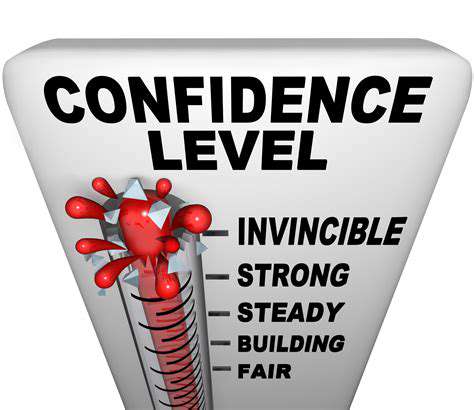

![Guide to Learning [Specific Programming Language, e.g., JavaScript]](/static/images/32/2025-05/DelvingintoFunctionsandMethods3ABuildingBlocksofReusability.jpg)

